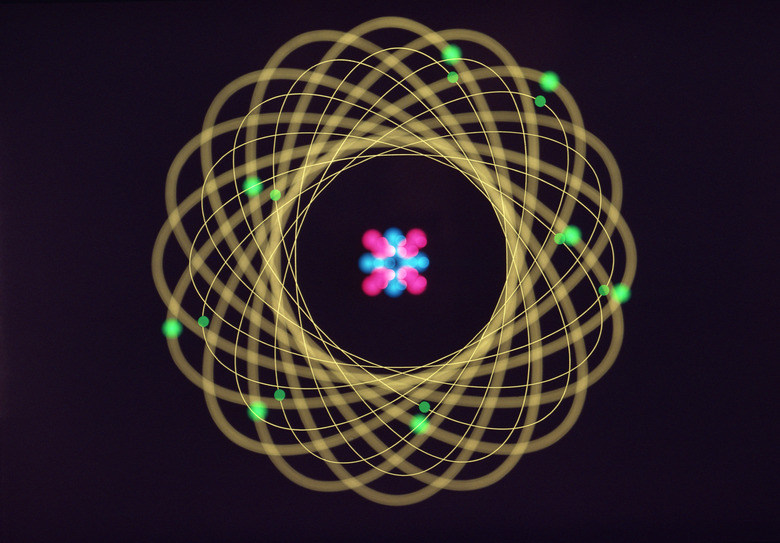How To Make A Model Of An Atom Out Of Paper Towel Rolls
Atoms are the most basic units of matter and the structure by which all elements and compounds are formed. The nucleus of an atom is composed of subatomic particles, including positively charged protons and neutral neutrons, and is surrounded by negatively charged electrons. A model can be made to represent the structure of an atom to help students visualize the atom, understand its structure and better understand how it can bond with other atoms. A simple Bohr model of an atom can be made using recycled paper towel rolls and string.
Step 1
Decide which atom or isotope you will be modeling and record the number of protons, neutrons and electrons for that atom. Refer to the periodic table of elements for these numbers.
Step 2
Cut out circles for the required number of protons and neutrons from the first paper towel roll. Differentiate each type of subatomic particle by cutting them different sizes. Use an additional paper towel roll if the selected atom requires more protons and neutrons.
Step 3
Cut out a large circle from that same paper towel roll to represent the nucleus of the atom.
Step 4
Glue the protons and neutrons to the nucleus of the atom to represent their place in the center of the atom.
Step 5
Cut thin slices from the second paper towel roll to create intact rings. Cut as many slices as are needed to represent the number of electrons in the selected atom. These rings will represent the orbit of electrons around the atom's nucleus.
Step 6
Using the tip of your scissors, puncture two holes in the nucleus for each electron. Loop fishing line through a hole and tie one end to secure it to the nucleus. Tie the other end of the string around one side of one electron ring. Tie a second piece of fishing string around the other side of the electron ring and loop the end of that string through another hole on the opposite end of the nucleus to secure that electron orbit.
Step 7
Repeat this process to attach the remainder of the electron orbits to the nucleus. Bend the electron rings to adjust the orbit shape so that all of the rings fit around the nucleus.
Step 8
Paint the subatomic particles different colors to differentiate between the protons, neutrons and electrons.
Things Needed
- Periodic table of elements
- 2 or more paper towel rolls
- Scissors
- Glue
- Fishing line
- Paint
TL;DR (Too Long; Didn't Read)
This type of model works best for simple atoms such as hydrogen. More complex atoms or atoms with more subatomic particles may be difficult to represent using a Bohr model.
References
Cite This Article
MLA
Junious, Brandi. "How To Make A Model Of An Atom Out Of Paper Towel Rolls" sciencing.com, https://www.sciencing.com/make-model-atom-out-paper-towel-rolls-12042805/. 24 April 2017.
APA
Junious, Brandi. (2017, April 24). How To Make A Model Of An Atom Out Of Paper Towel Rolls. sciencing.com. Retrieved from https://www.sciencing.com/make-model-atom-out-paper-towel-rolls-12042805/
Chicago
Junious, Brandi. How To Make A Model Of An Atom Out Of Paper Towel Rolls last modified August 30, 2022. https://www.sciencing.com/make-model-atom-out-paper-towel-rolls-12042805/
